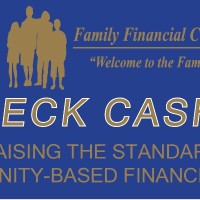Not sure if Estrella Insurance is right for you?
Talk to a Franchise Advisor who can match you with your perfect franchise based on your goals, experience, and investment range.
Talk to an Expert
Estrella Insurance
How much does Estrella Insurance cost?
Initial Investment Range
$149,950 to $284,000
Franchise Fee
$100,000 to $200,00
We are offering the opportunity to become our area representative to procure and assist others to open and operate, insurance agencies and financial services business under our Trademarks and System.
Enjoy our partial free risk analysis below
Unlock the full risk analysis to access 9 more categories covering 100+ risks.
Estrella Insurance April 11, 2025 FDD Risk Analysis
Free FDD Library AI Analysis Date: August 21, 2025
DISCLAIMER: Not Legal Advice - For Informational Purposes Only. Consult With Qualified Franchise Professionals.
Franchisor Stability Risks
Start HereDisclosure of Franchisor's Financial Instability
Medium Risk
Explanation
Estrella Franchising, LLC (Estrella) is profitable, but its financial statements show massive distributions to the owner ($10.1M in 2024), reducing members' equity to just $510,014. While the company is backed by a large parent, this practice of capital extraction could prioritize short-term returns over system reinvestment. A subsequent data breach in 2025 adds an estimated $354,000 liability, further impacting its financial position.
Potential Mitigations
- Your accountant should review the franchisor's policy on distributions and assess the parent company's commitment to supporting the franchise system.
- Discuss the franchisor's capital reinvestment plans for technology and brand development with your business advisor.
- It is important for your attorney to review any financial guarantees provided by the parent company.
High Franchisee Turnover
High Risk
Explanation
Item 20 data reveals a significant risk at the Area Representative (AR) level. The number of ARs decreased from 6 to 4 in 2024, representing a 33% annual turnover rate due to terminations. This extremely high churn rate for master franchisees like yourself could indicate systemic problems with the business model, profitability, or franchisor support, suggesting a high risk of failure.
Potential Mitigations
- Speaking with the former Area Representatives listed in Exhibit F is critical to understanding why they left the system.
- A thorough analysis of the AR role's profitability and challenges with your business advisor is essential.
- Your attorney should help you probe the franchisor about the specific reasons for these high-level terminations.
Rapid System Growth
Low Risk
Explanation
The risk of an overstretched support system due to rapid growth was not identified. In fact, Item 20 data for Area Representatives shows the system has recently contracted. Generally, rapid expansion can be a concern if a franchisor's support infrastructure cannot keep pace with the number of new franchisees, leading to diluted support for everyone.
Potential Mitigations
- A discussion with your business advisor about a franchisor's growth plans is always a prudent step.
- Even without rapid growth, an understanding of the franchisor's support staff-to-franchisee ratio is useful information to request.
- Your attorney can help review the support commitments outlined in the franchise agreement to ensure they are adequate.
New/Unproven Franchise System
Low Risk
Explanation
This risk was not identified. Item 1 indicates the predecessor company began offering franchises in 2008, giving the system a long operational history. For truly new franchises, the lack of a proven track record, established brand recognition, and developed support systems typically presents a higher level of risk for early investors.
Potential Mitigations
- It is always wise to have your business advisor research the franchisor's full history, including any predecessors.
- Speaking with the longest-tenured franchisees can provide insight into the system's evolution and stability.
- An accountant can help analyze how a mature system's financial performance has trended over time.
Possible Fad Business
Low Risk
Explanation
The business model, which involves operating and developing a network of insurance agencies, is not considered a fad. It serves a long-standing and ongoing consumer need. A fad-based business carries the risk that consumer interest may decline rapidly, potentially jeopardizing the long-term viability of your investment even if your contractual obligations continue for years.
Potential Mitigations
- A business advisor can help you assess the long-term market demand for any franchise's products or services.
- A review of the franchisor's plans for innovation and adaptation with your attorney is a good practice.
- Your accountant can help model the business's resilience to shifts in consumer taste or economic downturns.
Inexperienced Management
Low Risk
Explanation
This risk was not identified. Item 2 shows that the key executives have extensive, long-term experience with the Estrella system, with most having been with the company for over a decade. Inexperienced management can pose a significant risk, as it may lead to poor strategic decisions, inefficient systems, and inadequate franchisee support.
Potential Mitigations
- A thorough review of the management team's background in both the industry and in franchising with a business advisor is a key part of due diligence.
- Legal counsel should confirm if there are key-person provisions in the agreement in case experienced leaders depart.
- In any franchise review, speaking with existing franchisees provides the best insight into management's competence and responsiveness.
Private Equity Ownership
Medium Risk
Explanation
The franchisor was acquired in May 2023 by a large corporate parent, Alliant Insurance Services, Inc. The 2024 financial statements show a subsequent $10.1 million distribution was taken from the company, draining its equity. This large capital extraction following an acquisition could indicate a focus on generating short-term returns for the new owner over ensuring the long-term financial health of the franchise system.
Potential Mitigations
- Researching the parent company's track record with other franchise systems they have owned can provide valuable context.
- A conversation with your accountant is needed to assess the financial implications of the franchisor's equity position.
- It is important to discuss the new owner's philosophy and long-term plans for the brand with your business advisor.
Non-Disclosure of Parent Company
Low Risk
Explanation
This risk was not identified. Item 1 of the FDD clearly discloses the parent and affiliate companies, and the franchisor provides its own audited financial statements. When a franchisor is a newly formed or thinly capitalized subsidiary, the failure to also provide financial statements for a parent company that guarantees its obligations can hide significant financial risks.
Potential Mitigations
- Your attorney should always verify the corporate structure and identify all parent and affiliate companies.
- An accountant should assess if the franchisor is adequately capitalized on its own or if a parent guarantee is necessary and disclosed.
- Ensure that if a parent company's financials are provided, they are audited and meet the same standards as the franchisor's.
Predecessor History Issues
Low Risk
Explanation
This risk was not identified. The FDD discloses the predecessor entity and appears to provide continuous operational and management history. A crucial part of due diligence is understanding the entire history of the franchise system, as issues from a predecessor, such as litigation or high franchisee turnover, can sometimes be inherited by the new franchisor.
Potential Mitigations
- A careful review of Items 1, 3, and 4 for any information related to predecessors should be conducted with your attorney.
- Independent online research on the predecessor brand name may reveal historical issues not prominent in the FDD.
- Asking long-tenured franchisees about their experience under any previous ownership is a valuable due diligence step.
Pattern of Litigation
Low Risk
Explanation
This risk, defined as a pattern of franchisee-initiated lawsuits alleging fraud or misrepresentation, was not identified. Item 3 does disclose a significant class-action lawsuit, but it relates to a data breach, not disputes over the franchise relationship itself. A history of litigation where franchisees claim they were misled can be a major red flag about a franchisor's sales practices and integrity.
Potential Mitigations
- Having your attorney carefully review the nature, frequency, and outcomes of all litigation in Item 3 is a critical step.
- A business advisor can help you research online for any informal franchisee complaints or disputes that did not result in litigation.
- Contacting franchisees involved in past litigation, if possible, can provide invaluable firsthand accounts.
Disclosure & Representation Risks
Example Risk: Franchisee Financial Obligations
Blue Risk
Explanation
This risk involves the financial obligations that a franchisee must meet, including initial fees, ongoing royalties, and other required payments. Understanding these obligations is crucial for long-term success.
Potential Mitigations
- Carefully review the Franchise Disclosure Document (FDD) and consult with a franchise attorney to fully understand all financial commitments before signing.
- Conduct regular risk assessments
- Implement monitoring and reporting systems
Unlock Full Risk Analysis
Purchase the complete risk review to see all 102 risks across all 10 categories.
Financial & Fee Risks
Example Risk: Franchisee Financial Obligations
Blue Risk
Explanation
This risk involves the financial obligations that a franchisee must meet, including initial fees, ongoing royalties, and other required payments. Understanding these obligations is crucial for long-term success.
Potential Mitigations
- Carefully review the Franchise Disclosure Document (FDD) and consult with a franchise attorney to fully understand all financial commitments before signing.
- Conduct regular risk assessments
- Implement monitoring and reporting systems
Unlock Full Risk Analysis
Purchase the complete risk review to see all 102 risks across all 10 categories.
Legal & Contract Risks
Example Risk: Franchisee Financial Obligations
Blue Risk
Explanation
This risk involves the financial obligations that a franchisee must meet, including initial fees, ongoing royalties, and other required payments. Understanding these obligations is crucial for long-term success.
Potential Mitigations
- Carefully review the Franchise Disclosure Document (FDD) and consult with a franchise attorney to fully understand all financial commitments before signing.
- Conduct regular risk assessments
- Implement monitoring and reporting systems
Unlock Full Risk Analysis
Purchase the complete risk review to see all 102 risks across all 10 categories.
Territory & Competition Risks
Example Risk: Franchisee Financial Obligations
Blue Risk
Explanation
This risk involves the financial obligations that a franchisee must meet, including initial fees, ongoing royalties, and other required payments. Understanding these obligations is crucial for long-term success.
Potential Mitigations
- Carefully review the Franchise Disclosure Document (FDD) and consult with a franchise attorney to fully understand all financial commitments before signing.
- Conduct regular risk assessments
- Implement monitoring and reporting systems
Unlock Full Risk Analysis
Purchase the complete risk review to see all 102 risks across all 10 categories.
Regulatory & Compliance Risks
Example Risk: Franchisee Financial Obligations
Blue Risk
Explanation
This risk involves the financial obligations that a franchisee must meet, including initial fees, ongoing royalties, and other required payments. Understanding these obligations is crucial for long-term success.
Potential Mitigations
- Carefully review the Franchise Disclosure Document (FDD) and consult with a franchise attorney to fully understand all financial commitments before signing.
- Conduct regular risk assessments
- Implement monitoring and reporting systems
Unlock Full Risk Analysis
Purchase the complete risk review to see all 102 risks across all 10 categories.
Franchisor Support Risks
Example Risk: Franchisee Financial Obligations
Blue Risk
Explanation
This risk involves the financial obligations that a franchisee must meet, including initial fees, ongoing royalties, and other required payments. Understanding these obligations is crucial for long-term success.
Potential Mitigations
- Carefully review the Franchise Disclosure Document (FDD) and consult with a franchise attorney to fully understand all financial commitments before signing.
- Conduct regular risk assessments
- Implement monitoring and reporting systems
Unlock Full Risk Analysis
Purchase the complete risk review to see all 102 risks across all 10 categories.
Operational Control Risks
Example Risk: Franchisee Financial Obligations
Blue Risk
Explanation
This risk involves the financial obligations that a franchisee must meet, including initial fees, ongoing royalties, and other required payments. Understanding these obligations is crucial for long-term success.
Potential Mitigations
- Carefully review the Franchise Disclosure Document (FDD) and consult with a franchise attorney to fully understand all financial commitments before signing.
- Conduct regular risk assessments
- Implement monitoring and reporting systems
Unlock Full Risk Analysis
Purchase the complete risk review to see all 102 risks across all 10 categories.
Term & Exit Risks
Example Risk: Franchisee Financial Obligations
Blue Risk
Explanation
This risk involves the financial obligations that a franchisee must meet, including initial fees, ongoing royalties, and other required payments. Understanding these obligations is crucial for long-term success.
Potential Mitigations
- Carefully review the Franchise Disclosure Document (FDD) and consult with a franchise attorney to fully understand all financial commitments before signing.
- Conduct regular risk assessments
- Implement monitoring and reporting systems
Unlock Full Risk Analysis
Purchase the complete risk review to see all 102 risks across all 10 categories.
Miscellaneous Risks
Example Risk: Franchisee Financial Obligations
Blue Risk
Explanation
This risk involves the financial obligations that a franchisee must meet, including initial fees, ongoing royalties, and other required payments. Understanding these obligations is crucial for long-term success.
Potential Mitigations
- Carefully review the Franchise Disclosure Document (FDD) and consult with a franchise attorney to fully understand all financial commitments before signing.
- Conduct regular risk assessments
- Implement monitoring and reporting systems
Unlock Full Risk Analysis
Purchase the complete risk review to see all 102 risks across all 10 categories.




